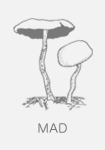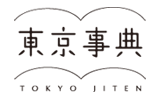Caroline Achaintre report
1)Objectives/areas of interest
I was invited by AIT via the Camden Arts Centre for a research-based residency, which was supported by the Bunkacho.
Not having a specific project in mind I was hoping to spend my time there looking at a large variety of traditional Japanese arts and crafts as well as seeing different types of theatre, especially Kabuki and Noh, as I am very interested in their masks and costumes.
The other area I was hoping to explore was Japanese animation. I was always fascinated by the films by Hayao Miyazaki/ The Studio Ghibli and their portrayal of the coexistence of the real and the spiritual world, as well as good and evil within one character, dualism.
I was therefore really happy to be living in Ochanomizu, an area very close to Akihabara which buzzes with animation geeks and freaks.
Although I would not call Ochanomizu a very trendy area, it could not have been more central and made it very easy to go to many places by foot and public transport. The Imperial Palace was also close enough for me to start a running routine alongside all the local joggers.
The apartment was tiny but bright, and although I did not have a studio in Tokyo I managed to make a series of drawings and collages there.
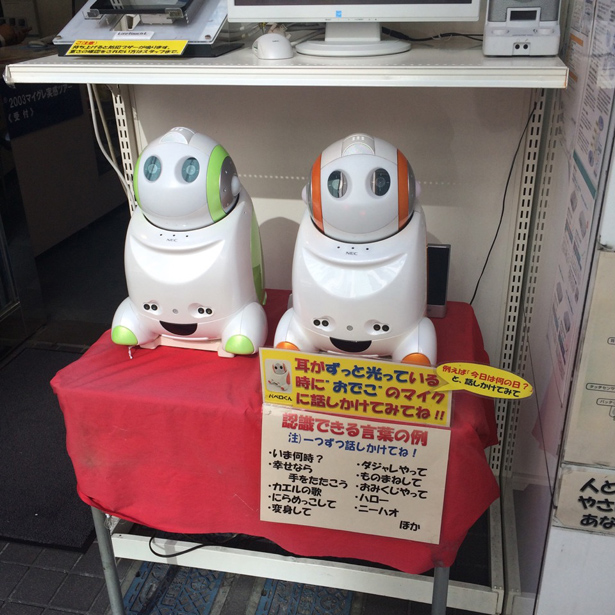
Robots on my way to Akihabara
2)Activities during your stay
I visited many museums in Tokyo, such as the Tokyo National Museum, the Tokyo Museum of Western Art, The Nezu Museum, The National Museum of Modern Art as well as the Folk Craft Museum. I was very impressed with the more traditional art forms and their quality and presentation. I really liked the lack of the severe separation between art and craft.
Apart from the art and craft-, and contemporary art-related exhibitions I went to the Ghibli Museum, the Noguchi Garden Museum in Takamatsu, the ethnological museum Minpaku in Osaka, MIMOCA in Marugame as well as the art islands Naoshima and Teshima.
While still in Tokyo AIT organized an interesting gallery tour of places I would not have found myself, as I was never able to understand the address system, and could only find the institutions that appear on every map.
The symposium at Shibaura House happened only 3 weeks after our arrival and was a great experience as the audience seemed really engaged and askedvery interesting questions.
As Jesse Wine, the other artist from London, and myself wanted to show some of our ceramic work during the symposium , organised and curated by Gina Buenfeld from Camden Arts Centre, we had to find a ceramic studio to work in.While in the U.K. I had believed that there would be ceramic studios all over the place, as Japan is so well known for mastering that art form, but it was actually the opposite - it was almost impossible to find one in Tokyo. Most studios are actually not in Tokyo and AIT had to work very hard to find a place for us and luckily succeeded.
So for eight days we went to Mr. Ezaki's 4th floor ceramic workshop in central Shinjuku. It was really fun to work there and meet all the other potters. Although communication was difficult at times - very few spoke English and our Japanese is not worth mentioning - but over our daily visits and afternoon tea sessions we managed somehow to have really nice moments of conversation.
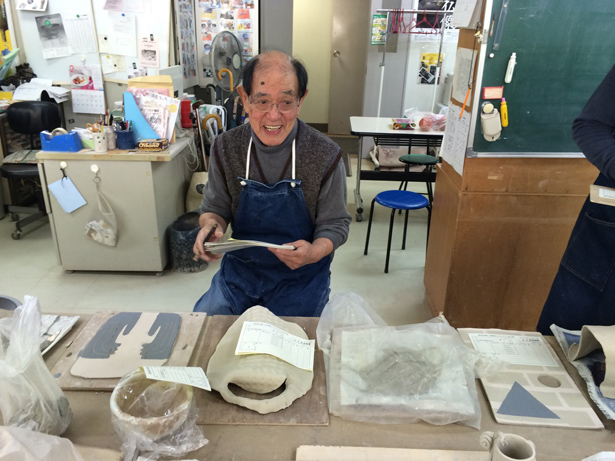
Mr.Ezaki of Shinjuku Tobo / Measuring and weighing my ceramics in the studio in Shinjuku
3)Travelling
After five weeks in Tokyo I travelled for two weeks on my JR Railpass and went to Kyoto, Osaka, Takamatsu, Naoshima and Teshima.
My personal highlight, apart from meeting really nice people and seeing amazing architecture, was Minpaku, an ethnological Museum located at the former Expo site in Osaka. The other highlight was MIMOCA, a pretty contemporary Museum in the tiny town Marugame.
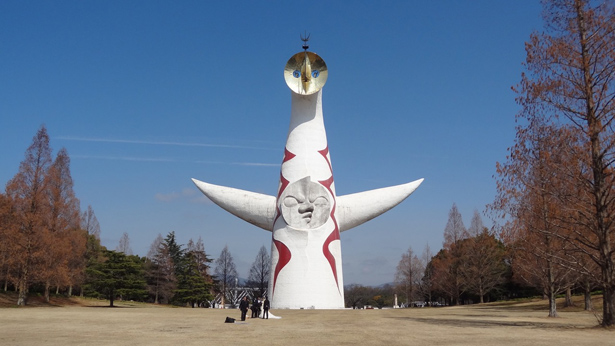
Outside Minpaku

Inside Minpaku

MIMOCA
4)Outcomes from your residency
I cannot say at that stage yet how this stay will inform my practice, but being in Japan had a real impact on me and I really want to return to do an exhibition there.
I met one gallerist and his assistant, as well as one museum curator - both meetings were very fruitful. I was surprised by the very sensitive observations relating to my work that emerged when people saw for the first time.
I believe there is a link between my interest in animism and the Japanese belief of objects, stones, etc having souls. Also dualism, the co-existence of good and bad within one entity is a recurrent theme in my work and also lives within the Japanese spiritual world.
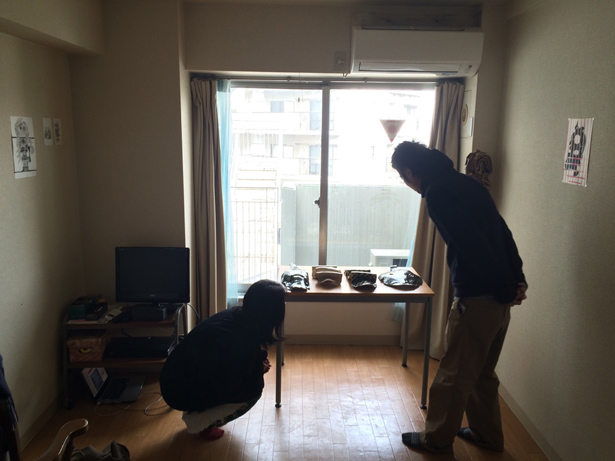
studio visit in my tiny flat
Back to Agency of Cultural Affairs

